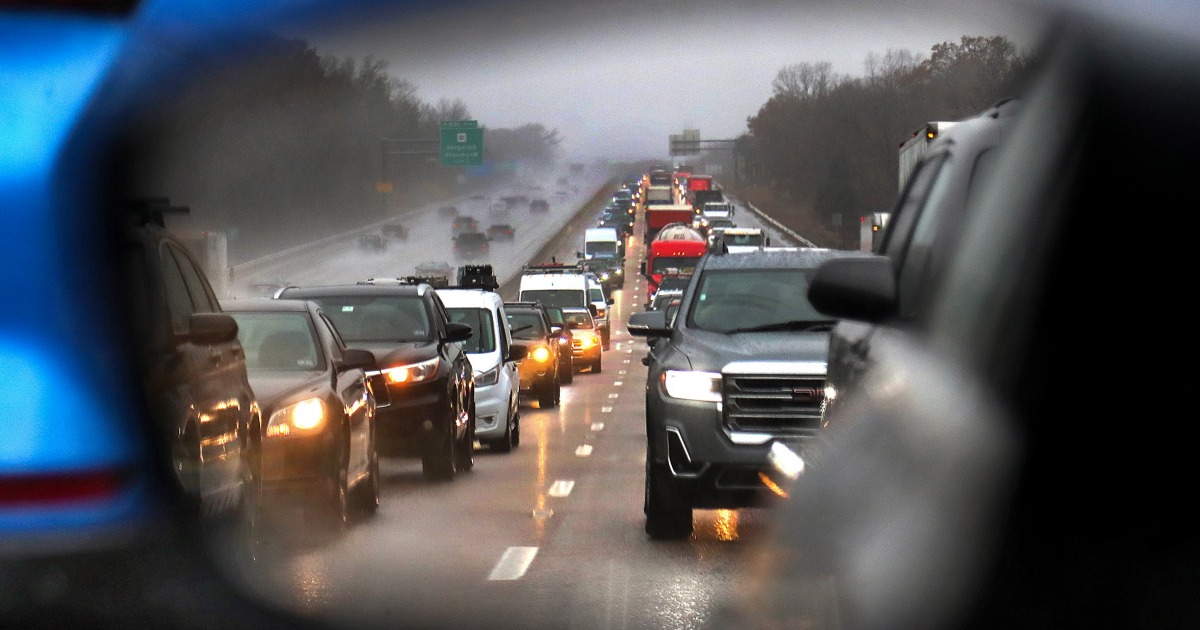Jennifer Eikenhorst was driving home with her young daughters one evening after picking them up from a friend’s house. She was on a rural road and came to a stop at the top of a hill, so she didn’t see the approaching motorcyclist.
“His name was David, and when I entered the intersection, it was too late for him,” she said.
At that moment, Eikenhorst became a CADI, an acronym for Causing Accidental Death or Injury — a term coined by the late Maryann Gray, founder of the Hyacinth Fellowship, an organization that offers comfort and guidance to people who accidentally kill or seriously injure someone.
At least 30,000 people become CADIs and their victims each year, said Chris Yaw, the fellowship’s president. Many accidental deaths involve guns or medical mishaps, but the majority, he said, are caused by car crashes.
The deaths have inspired some CADIs, like Eikenhorst, to seek reforms to the nation’s car-centric transportation system that allows otherwise innocent people to become unintentional killers.
“We can’t escape risk with vehicles, but there are so many things we can do to improve their safety,” she said, suggesting more distracted-driving awareness campaigns and enhanced car-safety features.
The Alliance for Automotive Innovation, a lobbying group that represents most domestic car manufacturers, said in a statement that vehicles “continue to get even more safe as automakers across the board test, develop and integrate breakthrough safety technologies that help save lives and prevent injuries.”
That’s thanks to new features like exterior cameras and computer-controlled braking, as well as better blind spot detection systems.
Despite the improvements, pedestrian deaths continue to climb, reaching a 40-year high in the U.S. in 2022. Traffic deaths have also risen in recent years, according to a New York Times analysis.
In the first half of 2023, an estimated 19,515 people were killed in traffic crashes, according to the National Highway Traffic Safety Administration.
Eikenhorst, who was not found criminally liable for the motorcyclist’s death in 2016, said the fact she was driving responsibly almost made it harder to accept.
“I was obeying the law. I was not negligent. I had never been in an accident or even ticketed,” she said. “I was the strict mom, and this still happened to me.”
It could happen to anyone, she warns.
“One of the most profound things my lawyer said to me is that a driver’s license is a license to kill,” she said.
“I’d never thought about it that way, but we give these licenses to 16-year-olds who are still developing emotionally, so there’s a lot of systemic issues I think could be improved upon.”
Yaw said CADIs don’t refer to themselves as victims, because “we understand there’s a victim in any accident, and we don’t want to take away from their victimhood.”
But, he said, “In any accident, there’s someone who caused it that feels terrible.”
Eikenhorst said CADIs endure unique suffering.
“It’s a complete devastation of your entire identity,” she said. “I was a wife and mom, a teacher and community member. In an instant I was shattered and lost all that as I went into a season of depression.”
Even in those rare moments when she could function, she felt guilty that she had her children and the deceased victim’s family no longer had him.
“We question our entire existence,” she said, “and believe we are no longer worthy to live.”
Jessica Ward’s accident occurred just before the holidays last year, as she and her husband were leaving a mall outlet in Asheville, North Carolina. Ward, a former medical administrator, said the outlet was right off the main interstate, where accidents commonly occurred.
As Ward merged onto the interstate, she said she looked both ways three, possibly four, times. Then she heard a thump.
It was an 18-year-old motorcyclist.
“It’s a warped sense where you almost wish you were on your phone, because then you can know it’s your fault,” she said. “But I couldn’t have done anything different that day.”
Ward was an experienced driver who owned pickup trucks and a mobile home. She considered herself extremely cautious. But her accident showed her just how inherently dangerous driving is.
“Cars are the main way we get necessities in life,” she said. “They are safer than what they used to be, but they are still 5,000-pound metal vehicles.”
Isabella Chu, associate director of the data core at the Stanford Center for Population Health Sciences, blames unintentional car deaths on a transportation infrastructure that requires people to operate unsafe heavy machinery.
“We have made driving a requirement to access mobility in most of America,” she said. “But driving is a hazardous activity that results in tens of thousands of deaths and millions of injuries every year.”
“Unless something changes radically,” she said, “it’s pretty much a statistical certainty there will be over 40,000 deaths and millions of injuries every year.”
David Peters, an Episcopal priest from Texas, became a CADI in 1994 when he was only 19.
He was driving with his roommate to church one evening when the sunlight pierced the windshield and momentarily blinded him. He hit a median barrier, then swerved into oncoming traffic.
“I looked up and saw a motorcycle coming straight at me, and that’s the last thing I remember,” he said.
Peters said he believes society needs to do a better job of communicating the dangers of cars and of dismantling the systems that force us to use them.
“If people knew how dangerous car culture is for all of us, and how we’re all one steering-wheel turn away from a horrific accident that will feel like a murder,” he said, “then that is the only thing that might help us all dream of a better world.”
